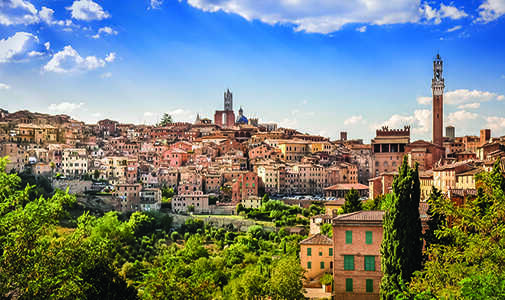Beth D. Says:
I’d like to “try out” living in Italy for a year or two. So I wouldn’t want to buy a home there. Do you have any advice on renting?
 IL Executive Editor Jennifer Stevens Says:
IL Executive Editor Jennifer Stevens Says:
Hi Beth,
If you’re thinking of renting for a year or two, you’re probably better off looking for a furnished (arredata) property. Unfurnished (vuota) really does mean “bare bones”; Italians will take the curtain rails, the light bulbs, and the toilet seat when they move out. In between, you will also see parzialmente arredata. This means it should have light fittings, a fitted kitchen, and maybe wardrobes or dressers.
At the lower end of the market, there’s a chronic shortage of accommodation in major cities, Rome especially. Unless you’re quick off the mark and have a good command of Italian, scouring local newspapers for accommodation can be frustrating. Although it will almost certainly cost the equivalent of at least two months’ rent, a commission fee, and a two-year lease contract, the hassle-free way of finding homes is through agencies or realtors that specifically deal in rentals.
Immobiliari and rental agencies demand the first month’s rent upfront, and you may have to provide the equivalent of another one to three months’ rent as a security deposit. Providing the property is in the same condition as when you moved in, this deposit is returned at the end of the lease period.
To terminate long-term leases, you must send a written non-renewal notice (disdetta) to the owner long before the termination of the rental contract. Without this notice, the contract is automatically renewed. The notice should be sent by registered mail with return receipt (raccomandata con ricevuta di ritorno) to avoid any possible argument that you’ve given insufficient notice.
The agency’s finder’s fee is paid by the tenant and generally amounts to around 10% to 15% of the first year’s rent.
Additional costs depend on where you choose to live and your lifestyle. Most urban folk live in apartment buildings, and some of these edifices look as if they were built at around the same time Rome was founded. This is fine if you like the distressed look, but unmodernized buildings often don’t have elevators or central heating.
As far as rental prices are concerned, there is a huge difference between cities and small towns. Take Rome, where a small furnished apartment of some 375 square feet in the trendy Trastevere area may cost you €1,200 ($1,306) per month. But for the same amount of money, you can get a two-story country villa built in the 1400s in the northern Tuscan province of Lucca.
You may have to budget for what’s called the spese condominiali, or common charges for an apartment building. Sometimes they are included in the rent; in other instances they are not. Depending on what services are offered, gas, central heating, hot water, elevator maintenance, external lighting, and the man who comes to clean the foyer will add at least €80 ($87) to your monthly bill. Of course, you will also have to pay electricity and telephone bills.
There is more information on renting in Italy, including a breakdown of how lease agreements work, in Chapter 4 of Escape to Italy, available on the IL Bookstore here.
Got a Question?
Send your thoughts to mailbag@internationalliving.com. We’ll post and respond to as many of your emails as we can right here in the e-letter.

